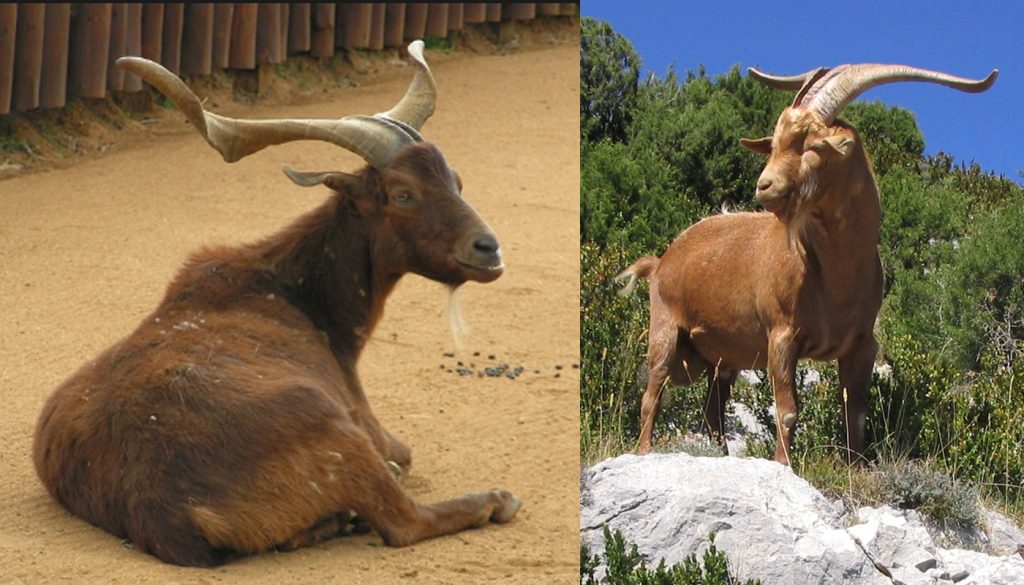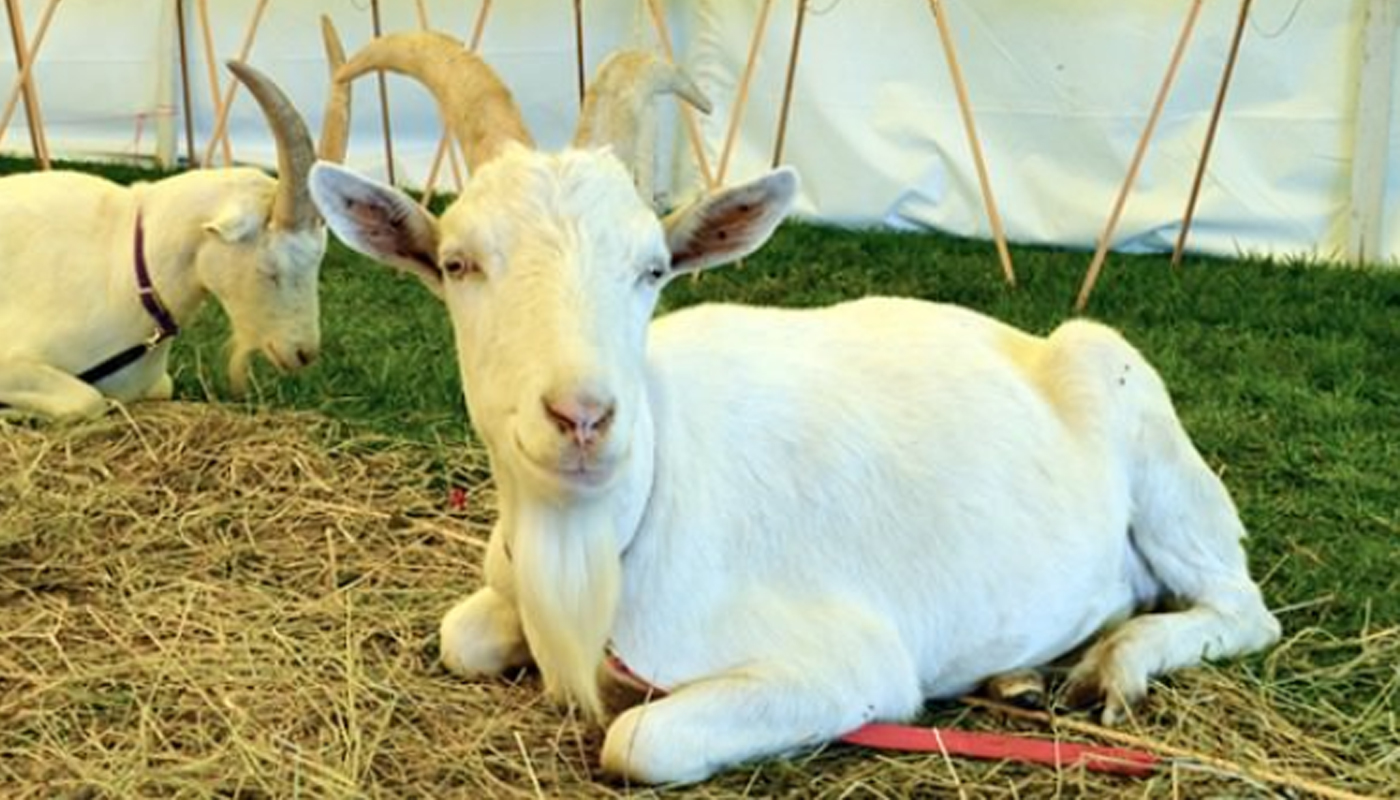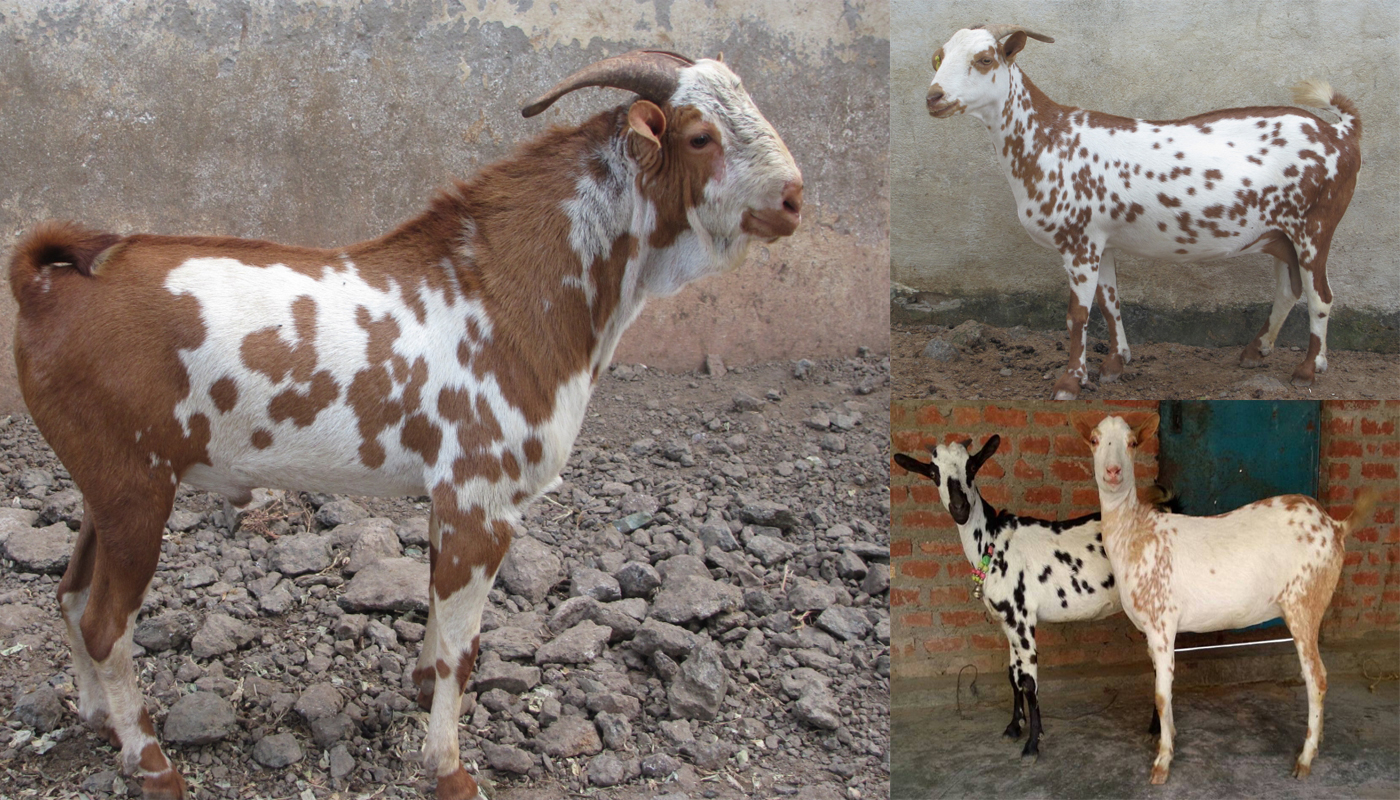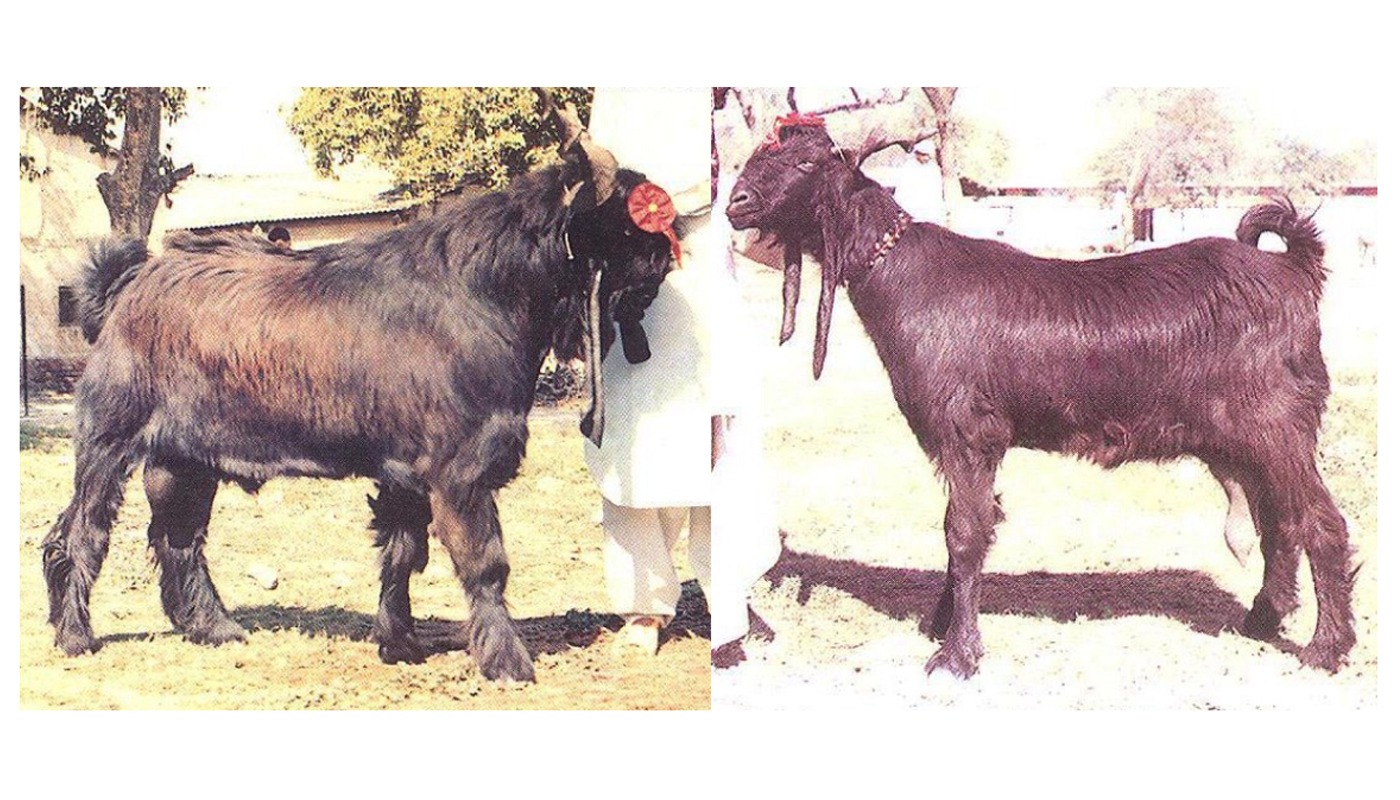
The Rove goat is a large beautiful antelope type goat breed with very large, heavy thick twisted Lyre-shaped horns.
They were initially bred for meat, but their population was plundered and their numbers fell into the endangered species level the goats were switched to being kept for milking and being used to clear out inaccessible areas around various reserves or landscapes to counteract fires that these areas are prone to.
Rove Goat Quick Profile Overview
| Due to their incredible ability to access otherwise inaccessible areas and seek out landscapes with scarce to poor vegetation they are used to keep these areas clear in order to stop fires that the various areas are known for. | |
| Country of Origin: | France |
| Other Names: | Chevre du Rove (French) |
| Breed Size: | Large |
| You may Also Like: | Top 12 Large to Largest Goat Breeds |
| You may Also Like: | 11 Smaller and Miniature Goat Breeds |
| Main Purpose: | Milk and foliage control |
| Can be used for | Breeding, Milk |
| You may Also Like: | 10 Best Goat Breeds for Meat Production |
| You may Also Like: | Top 10 Best Dairy Goat Breeds |
| Temperament: | They are very active and acrobatic but are also quite well-mannered and friendly |
| Good with Kids? | They are bit too large and active to have around children |
| You may Also Like: | 10 Best Goat Breeds to Keep as Pet |
| Ideal Environment: | They like open landscape with challenging environments | Ideal Climate: | All climates |
| Conservation Status: |
Not Listed by the *ALC Population is increasing |
| Health Issues? | No known health issues and less prone to various parasites |
| Good Starter Goat? | These goats are more for the experienced livestock breeder |
| Goat Associations: | Association de Defense des Caprins du Rove |
| Goat Clubs: | No known goat clubs |
| Note: *ALC stands for American Livestock Conservancy | |
PHYSICAL CHARACTERISTICS
| It is a tall lanky breed with a long neck and legs. Its body is leaner and more muscular. They have a set of impressive horns on their heads. | ||
| Color(s): | Their coats are often black, red, grey, mottled grey/white, red speckled white or black with tan markings There are not color variations between the buck and the doe. |
|
| Goat⇒ | Doe | buck |
| Breed Weight: | 60 kg’s | 90 kg’s |
| Breed Height: | About 74 cm at withers | About 81 cm at withers |
| Hair: | Short, thick and glossy | Short, thick and glossy |
| Ears: | Long tubular/hard pendulous ears held out front facing from their head. The ears are usually a light version of their coat color | Long tubular/hard pendulous ears held out front facing from their head. The ears are usually a light version of their coat color |
| Horns: | Long, thick lyre-shaped horns that can reach up to 4 foot in length | Long, thick lyre-shaped horns that can reach up to 4 foot in length |
| Matures at age: | 5 to 15 months | 3 to 15 months |
| Puberty Age: | 4 to 10 months | 4 to 9 months |
| Breeding Age: | 18 months | 1 year |
| Breeding Traits: | 1 Breeding cycle | Cover 20 to 30 does in 1 season |
DOE BREEDING & MILKING INFORMATION
| They only breed once a year but do not need any help kidding as their babies are usually born out in the pastures where they are grazing | |
| Breeding Period/cycle: | Usually lasts 12 to 36 hours Ave. 21 days/18 to 24 days |
| Gestation Period: | Usually around 148 to 155 day but most are 150 days |
| Kids: | 1 to 4 |
| Good Mothers? | They will protect their young until they are weaned and can fend for themselves. |
| Lactation Period: | Usually around 250 to 284 days. Most common is 284 days |
| Milk Quality: | They may not be the best produces of milk only producing around 500 to 600 liters a year but their milk is richer, creamier and a lot sweeter than most any other goat breeds milk. |
| Milking Level: | They are not too hard to milk but may give a bit fidgety |
| You may Also Like: | Top 10 Best Dairy Goat Breeds |
GOOD TO KNOW
| A few tips and handy advice and information about the beautiful elegant and graceful Rove goat | |
| Where to buy them: | They are primarily found in France and nearby European towns. They are also endangered an as such only found on a few breeding farms in France |
| Agility: | They are very agile and able to get into places that are basically inaccessible to most creatures. |
| Interact with other animals: | They are not too sociable with other animals and prefer to stick to their own kind |
GENERAL INFORMATION:
The rove goat works as a fire prevention aid by clearing away sites that are inaccessible to most creatures in areas prone to fire.
The Rove goat is protected by an organization in France called the Association De Defense Des Carprins Du Rove. They protect the Rove goat breed due it almost becoming extinct in the 1970’s
Once a goat breed that was prolific in the fiber industry as the goat was used for meat but these days there is hardly any leather collected from this breed as it can no longer be used as a meat goat.
The Rove goat was once primarily used for its meat. But its numbers hit the critically endangered lists as such the breed can no longer be used for its meat.
HISTORY
The Rove goat is originally from a small village near Marseille in France called Le Rove. Hence the name of this gorgeous, hardy and robust breed of goat.
They have been a valuable meat and leather goat in this village for generations until 1970 when the breeds numbers had drastically declined due to the loss of interest in goat meats and goat products during this era.
A French animal group was founded called the Association De Defense Des Carprins Du Rove to protect and encourage local farmers to breed the goat as a dairy goat and to control natural vegetation on their lands that were prone to fire. This vegetation is naturally sought out as food by the Rove goat and is usually in areas that are inaccessible to most creatures and humans.
Today the Rove goat is still only used for milk and fire control, but their numbers have increased to over 5000 head on some French farms.
VIDEO
USEFUL LINKS
- American Goat Society(AGS)
- American Goat Federation (AGF)
- American Dairy Goat Association (ADGA)
- American Cashmere Goat Association (ACGA)
- Canadian Meat Goat Association (CMGA)
- Canadian Goat Society (CGS)
- Animal Shelter (ASPCA)
- American Veterinary Medical Association
- American Poultry Association
- American Animal Welfare Society
- American Animal Control
- American Animal Husbandry Society
 Top 12 Large to Largest Goat Breeds
Top 12 Large to Largest Goat Breeds Kinder Goat Breed – Everything You Need to Know
Kinder Goat Breed – Everything You Need to Know 10 Best Goat Breeds for Meat Production
10 Best Goat Breeds for Meat Production Finding the Perfect Match: Matching Goat Breeds to Your Lifestyle
Finding the Perfect Match: Matching Goat Breeds to Your Lifestyle Changthangi Goat Breed – Everything You Need to Know
Changthangi Goat Breed – Everything You Need to Know Nigora Goat Breed – Everything You Need to Know
Nigora Goat Breed – Everything You Need to Know Saanen Goat Breed – Everything You Need to Know
Saanen Goat Breed – Everything You Need to Know Barbari Goat Breed – Everything You Need to Know
Barbari Goat Breed – Everything You Need to Know Discover 8 Unusual Goat Breeds From Around the World | Unique Characteristics & Cultural Significance
Discover 8 Unusual Goat Breeds From Around the World | Unique Characteristics & Cultural Significance Jonica Goat Breed – Everything You Need to Know
Jonica Goat Breed – Everything You Need to Know Danish Landrace Goat Breed – Everything You Need to Know
Danish Landrace Goat Breed – Everything You Need to Know Dera Din Panah Goat Breed – Everything You Need to Know
Dera Din Panah Goat Breed – Everything You Need to Know